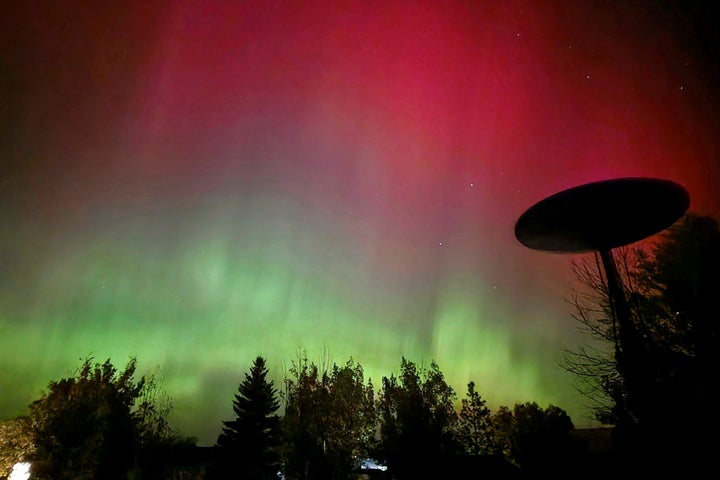
Good news for sky-watchers; the Met Office says that the stunning Northern Lights many of us spotted last night might just return this evening (October 11).
Also known as the Aurora Borealis, the Northern Lights happen after solar storms on the sun give out electrically charged particles.
Some of these reach the earth, and a couple will stay in our magnetic field ― these can accelerate towards the North and South Poles, creating beautiful lgiht storms.
Royal Observatory astronomer Tom Kerss told the Royal Museum Greenwich: “We call this physical process ‘excitation’, but it’s very much like heating a gas and making it glow.”
When is the best time to see the Northern Lights tonight?
Unfortunately, the Met says “The chances of aurora remain initially, though gradually easing through October 11, becoming increasingly confined to far northern geomagnetic latitudes by October 13.”
However they revealed that the best time to look out for the lights is around 10-11 pm tonight.
What’s the best place to see them?
The more Northerly the better, the Met says: Scotland and Northern Ireland, as well as some parts of the midlands, are more likely to see the displays.
However last night’s beauties were visible as far south as Hertfordshire, Buckinghamshire, London, and even the Channel Islands.
To maximise your chances of spotting the lights, the Met says we should:
- Choose a clear night with no cloud cover if possible
- Find a dark location with no light pollution
- Look toward the northern horizon
- Be cautious that geomagnetic activity can cause disturbances to satellite navigation (GNSS/GPS etc).
How can I take photos of the Northern Lights with my phone?
What our eyes see and what our lens captures are often two very different things, with the latter often being a little disappointing by comparison.
“Photographers use the same equipment and techniques used to capture dimly-lit features which are barely visible to the naked eye, such as the Milky Way,” the Met explains, which is why the pros’ pics look so good.
“This usually means using a tripod and a long exposure length,” they add.
But if, like us, you’ve only got a phone, Icelandair recommends taking the following steps:
For iPhones:
- Enable night mode: In low-light settings, locate the night mode icon (usually found in the top left corner next to the flash).
- Turn off the flash
- Open settings menu: Tap the arrow at the top of the screen. This will open the settings menu at the bottom.
- Adjust exposure: In the settings menu, find the night mode icon and slide the scale to enable maximum exposure.
- Fine-tune exposure: Tap the +/- icon to adjust the exposure level. Start with -0.7 as a baseline, and tweak it through trial and error.
- Rotate your iPhone: For a wider shot, rotate your device horizontally. Hold it steady or use a tripod to prevent blurring.
For Androids:
- Enable night mode: Open the camera app on your Android and activate night mode for better low-light shots.
- Set to professional mode
- Toggle manual focus: Tap the ‘MF’ icon to manually focus your camera for sharper images.
- Turn off the flash
- Adjust ISO & white balance: Set your ISO to 1600 or higher for low-light conditions. Adjust the white balance to around 3200K for a more natural look.
- Set shutter speed: Enable a longer shutter speed. For bright auroras, use a shutter speed of 1-5 seconds; for dimmer auroras, extend it to 20-30 seconds.
- Rotate your device: Rotate your phone horizontally for a wider shot. Hold it steady or use a tripod to avoid blurry images.
Here’s hoping the lights hit your backyard this evening!